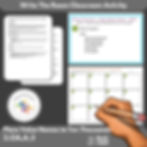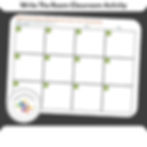End-of-year IEP progress reporting is a big deal. Think of it as your roadmap showing where you started, the journey so far, and where you're heading. It's not just paperwork. It's proof of progress, or sometimes, it reveals the need for a change in direction. Let me break it down. Every kid with an IEP (Individualized Education Program) is unique, and their progress matters. This reporting isn't about getting a pat on the back; it's about making sure the educational plan is actually working. It's like checking the health of the plan. Is it fit? Does it need a workout or a diet change? This report impacts decisions for the next school year. It influences teaching strategies, support services, and sometimes even the classroom environment. So yes, it's important. It ensures every student with an IEP continues to learn and grow, not just academically but socially and emotionally too. Keep in mind, a strong end-of-year IEP report can also be a tool in advocating for your child. It's evidence, powerful evidence, that can support requests for additional resources or changes. Remember, this isn't just end-of-term homework for teachers; it's a critical component in your child's education. Make sure you're involved, ask questions, and understand where things stand. Your involvement can make a big difference.
To illustrate, consider the story of Emily, an 8-year-old with dyslexia whose reading skills improved dramatically after her IEP was adjusted based on thorough end-of-year reporting. Her progress report clearly highlighted areas where targeted interventions were successful, leading to a revised strategy that helped her excel.

Key Components of an IEP Progress Report
An IEP progress report is a document that tracks a student's progress towards their individualized education program (IEP) goals over a specific period, often marking the end of the school year. Here’s what it includes:
Goals and Benchmarks: Every report lists the student’s IEP goals and usually breaks them down into manageable parts or benchmarks. This makes it easier to see exactly where progress is being made or where more support is needed.
Progress Towards Goals: It details the student's advancement, or lack thereof, towards each goal. This section is crucial. It tells parents and educators whether the current strategies are working or if they need to adjust the plan.
Teacher and Therapist Notes: Insights from the student's teachers, therapists, or other professionals provide a fuller picture of the student's progress. They can offer perspectives that numbers and ratings can't fully capture.
Standardized Test Scores: If applicable, the report may also include the student's performance on standardized tests, comparing it to previous scores to track academic growth.
Recommendations for Adjustment: Based on the progress (or lack thereof), the report might suggest changes to the IEP goals, teaching strategies, or support services.
Attendance Record: Attendance is often included to highlight the correlation between school presence and academic performance. Each of these components plays a vital role in assessing a student's progress and planning for their future educational needs. Understanding them can empower parents and educators to make informed decisions toward the child's success.
Dr. Helen Thompson, a special education expert, suggests, “Detailed IEP reports are invaluable. They don’t just measure progress; they guide the continuous adaptation of educational strategies to meet each child’s unique needs.”
Preparing for the End-of-Year IEP Review: Gathering Information
To prepare for the end-of-year Individualized Education Program (IEP) review, start by gathering all relevant information about the student's progress. This includes report cards, assessment results, notes from teachers, and any work samples. It's key to look at the goals set at the start of the year and measure the student's advancement towards these objectives. Talk to your child's teachers for their insights on progress and areas needing more support. Also, review any behavior reports or notes from specialists if they are part of the IEP. Gathering this information will give you a solid foundation for discussing your child's progress and setting goals for the next year. Remember, the aim is to have a clear picture of where your child stands and how the school can best support their learning going forward.
Strategies for Measuring Student Progress Effectively
When it comes to measuring student progress effectively in IEP (Individualized Education Program) settings, there are several strategies we can employ. First, set clear, measurable goals. These goals should be directly linked to the student’s specific needs and capabilities. They should be straightforward enough to track over time.
Next, use a mix of assessment methods. Don’t just stick to traditional tests. Include observations, portfolios of student work, and even self-assessments from the students themselves. This variety gives a fuller picture of how well a student is doing.
Regular check-ins are crucial. This doesn’t just mean formal assessments. It can be as simple as a weekly discussion with the student about their own feelings on their progress. These check-ins help adjust goals as necessary and keep everyone on track.
Progress monitoring tools are your friends. There are many tools out there designed to help track student progress in an organized, systematic way. Utilize them. They can save time and provide valuable data.
Remember, the key to effective progress reporting in an IEP setting is consistency and adaptability. Stay consistent with your methods, but be willing to adapt as the student's needs evolve. This approach ensures that progress is not only measured accurately but is also meaningful to the student’s personal growth journey.
How to Interpret IEP Goals and Objectives for the Report
Understanding IEP goals and objectives is key when it's time to write that end-of-year progress report. Think of each goal in the IEP as a target—what the student aims to achieve by the end of the year. These goals are split into objectives, which are the steps needed to hit the target. Here's the deal: when you're going through these goals, you're essentially checking if the student is on track. Did they meet the objective, exceed it, or are they still working on it? Break it down like this:
Progress: Is the student making steady progress toward the goal? This could look different for each student. Some might make huge leaps, others take smaller steps.
Achievement: Has the student already met or even gone beyond the goal? Sometimes, you'll find they've cracked it mid-year.
Challenges: Are there any hurdles stopping the student from reaching their goals? Identifying these is crucial.
Also, remember, it's not just about ticking boxes. Each objective in that IEP paints a broader picture of the student's journey. Your report should capture not just where they're at now but how far they've come. So, use clear, plain language to share this progress. Avoid jargon, and keep it real. Whether you're talking to parents, teachers, or the students themselves, your goal is to make this IEP report understandable, meaningful, and actionable.
Common Challenges in Reporting IEP Progress and How to Overcome Them
Reporting IEP progress at the end of the year throws many teachers and educators a curveball. One common challenge is keeping track of all the details. With so much going on, it's easy to lose sight of specific goals for each student. To beat this, use a digital tool or app where you can input updates as they happen. No more trying to remember everything at the last minute.
Another hurdle is making sure that the progress report is understandable to parents. Often, educational jargon can get in the way. The trick here is to keep the language simple. Break down the goals, where the students started, and where they are now in plain language. Think of explaining it to someone, not in education.
Differentiating reports can also be a bit of a headache because each student's IEP goals are unique. A one-size-fits-all approach won't cut it. To tackle this, create a template that highlights general areas of progress but leaves room for specific details about individual goals. This way, you can personalize without starting from scratch every time.
Finally, there's the challenge of time. Let's face it, end-of-the-year reporting collides with one of the busiest times on the academic calendar. Setting aside dedicated time each week for IEP work can be a game-changer. It may feel like a pinch at first, but it beats the end-of-year scramble.
In summary, staying organized, simplifying communication, personalizing your approach, and allocating dedicated time are key strategies to navigate the stormy seas of end-of-year IEP reporting. Embrace these methods, and you'll find smoother sailing ahead.
Tips for Writing Clear and Concise IEP Reports
When it's time to write IEP progress reports at the end of the year, your main goal is to be clear and concise. Parents and educators rely on these to understand a student's progress and areas that need support. Here's how to nail it:
Focus on the goals: Start with a brief overview of each goal set at the beginning of the year. Directly state whether the student met, partially met, or did not meet these goals.
Use simple language: Avoid jargon that can confuse those not familiar with educational terms. Plain language makes the report accessible to everyone.
Be specific: Provide examples of progress or challenges. Saying a student "improved in reading" is vague. Better to say "moved from reading Level A books to Level C books."
Keep it objective: Stick to the facts and observations without letting personal feelings color the report.
Highlight next steps: For goals not met or partially met, suggest what will be focused on next. This shows a plan is in place for continuous improvement.
Remember, the aim is to create a report that enlightens, informs, and guides the next steps for the student's educational journey. Keep it straightforward and focused.
Involving Parents and Students in the IEP Progress Discussion
In the world of IEP progress, parents and students aren't just spectators; they're key players. Here's the deal: Bringing them into the loop isn't just about niceties, it's crucial. Picture this: A team huddle where everyone's voice matters. That's what we're aiming for. When parents and students get involved in these discussions, it does wonders. We're talking about tailored strategies that actually fit because, guess what? The folks who deal with the IEP daily know what's up.
So, how do you make this collaboration as smooth as peanut butter? First off, communicate early and often. This ain't a once-a-year sit down. Keep those lines open. Next, listen. Really listen. Parents and students bring a perspective to the table that's gold. They live this stuff. And when it's time to talk progress, make it a dialogue, not a monologue. This is a two-way street.
Also, set the stage for success. Goals should be crystal clear from the get-go. No surprises. Everyone should be nodding along, knowing exactly where they're headed. And here's a kicker: Celebrate the wins, no matter how small. Did Johnny finally ace that math concept? Throw some confetti (figuratively, of course).
In the end, involving parents and students isn't just good practice; it's smart. It turns the IEP progress discussion from a report card moment into a team victory lap. And who doesn't love a victory lap?
Next Steps: Using the End-of-Year Report to Plan for the Future
The end-of-year IEP report isn't just a wrap-up document; it's a crucial tool for future planning. Once you get this report, it's time to roll up your sleeves and look ahead.
First, assess the progress made against the goals set at the start of the year. Ask, "Did we hit our targets?" If not, ask "Why?" and "How can we adjust?"
Second, use the insights gained to set new goals or adjust existing ones. Tailor these goals to be more achievable, or perhaps more challenging, based on the progress shown.
Third, consider the support needed. Maybe new tools, resources, or strategies came up in the report that could better support learning.
Fourth, communicate. Sit down with the educational team and your child to discuss these insights and plans. Making sure everyone is on the same page is key to your child's success. Remember, this report is more than just feedback; it's a roadmap for the next steps on your child's educational journey. Use it wisely.
Summary and Final Thoughts on the Impact of Effective IEP Reporting
Summing it all up, effective IEP reporting is much more than just paperwork. It's a roadmap that shows how far the student has journeyed over the school year. Think about it - without a clear summary of progress, it's hard to know if the education strategies are working or if they need a tweak. A solid end-of-year IEP report not only highlights the achievements and hurdles but also sets the stage for the next steps. It's about real impact - better learning, growth, and more tailored support where it's needed. Remember, every bit of progress counts, and when it's documented thoughtfully, it can make a significant difference in a student's educational journey. So, whether you're a teacher, parent, or student, understanding the value of these reports can truly change the game. Let's aim for reports that are not just done, but done right - because every student deserves the best shot at success.
































